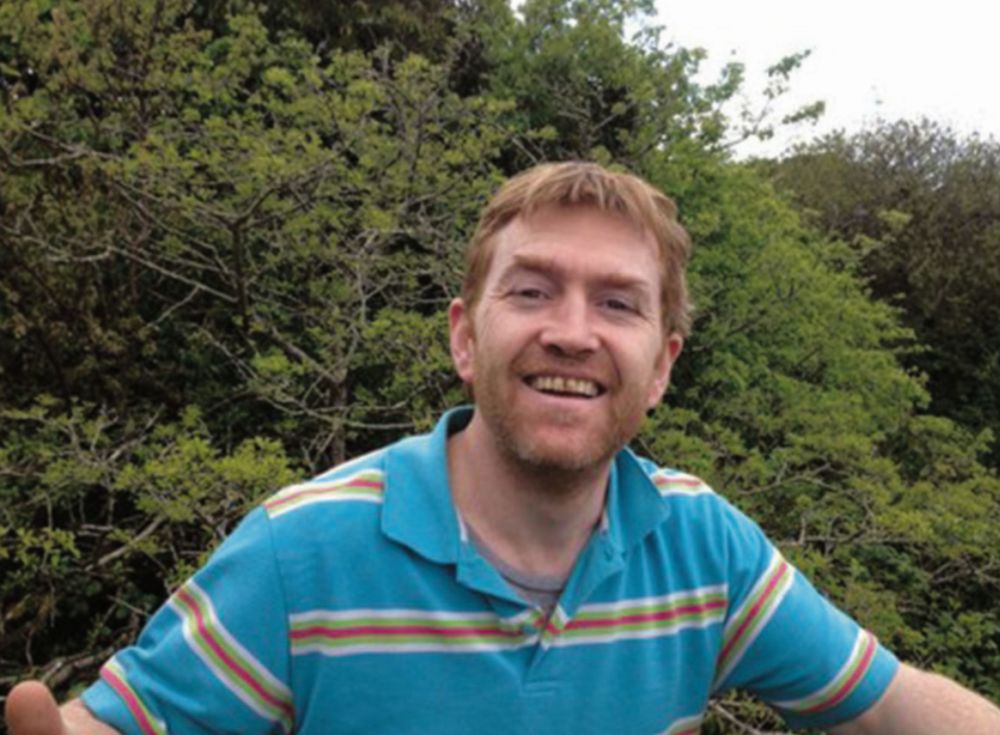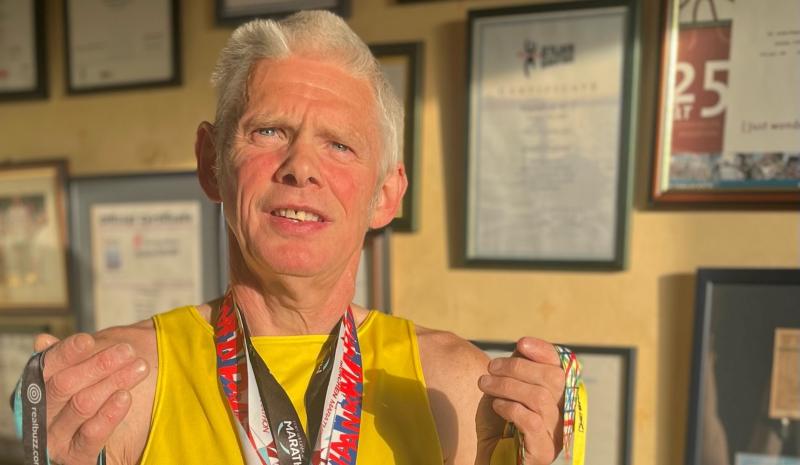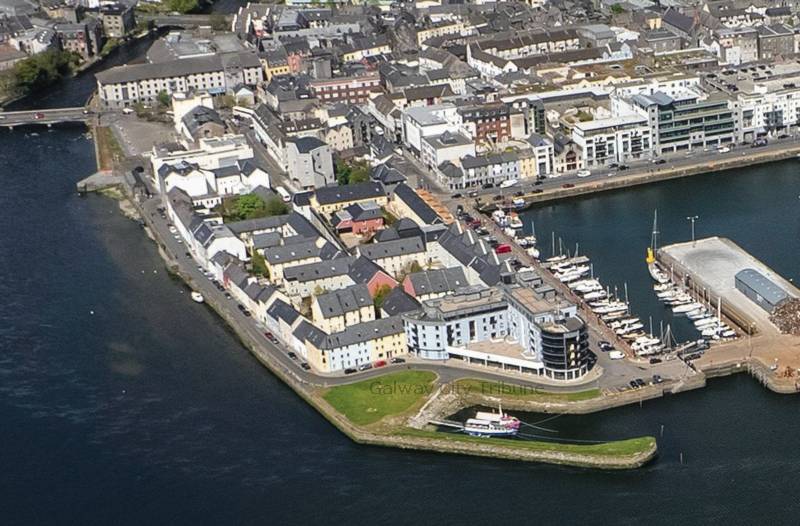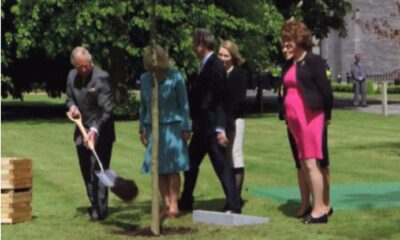News
Hospital CCTV comes under inquest scrutiny

It took eight days to locate a voluntary patient, who absconded from UHG’s psychiatric unit last summer, as there were no recordings of him leaving – as per regulations preventing CCTV being installed in and around the department.
At the inquiry into his death at Galway Courthouse on Friday, Coroner for West Galway, Dr Ciaran MacLoughlin, said that this was either “a glaring omission” or that the interpretation of the restrictions imposed by the Mental Health Commission was wrong.
It was CCTV footage captured from a neighbouring building that led to the search efforts being intensified around the Shantalla area – the remains of Raymond Walsh (40), formally of Whitehall Close, Lower Abbeygate Street, were located the following day.
His family were critical of hospital staff for not thinking to check the camera outside Ard Aoibhinn centre, which is owned by Cancer Care West.
The Coroner disagreed, however, and said that this would be unreasonable, considering the camera was not on hospital grounds.
He did praise the efforts of Sgt Lucy Lowry, however, who was the first to notice the camera on August 11.
While there was a security camera at the entrance to the mental health unit at the time, CCTV footage was not being recorded – as per management’s understanding of regulations imposed by the Mental Health Commission.
A live feed was connected to a screen at the nurse’s station – so patients or visitors could be buzzed in and out through the keypad-controlled door.
This measure was implemented in response to recommendations made by the Coroner, following the death of a voluntary patient (24) in similar circumstances five years ago.
The Inquest in January 2012 was told that outdated CCTV at the psychiatric unit had led to seven days of anguish for the family, before a young man’s remains were found.
The Coroner had recommended that the HSE update their CCTV cameras at the entrance to the ward, and provide one central location where all the cameras could be viewed at once.
However, since the August 2015 disappearance of Raymond Walsh, a camera now records the comings and goings at the entrance to the unit, but not what happens inside its doors; another camera records the enclosed garden at the perimeter of the property. Footage is kept for just 24 hours, and the cameras are not linked to the main hospital security system, which drew criticism from the Coroner.
“We think we are in breach of the Act, and may be sanctioned – there are significant sanctions,” consultant psychiatrist, Dr Laura Mannion, explained the reluctance of staff to record CCTV footage.
“We have been told that we are not allowed to record in a psychiatric unit.”
Mr Walsh had presented with a strong letter from his GP on July 30 last year. In it, he was described as having very severe symptoms of depression, low mood, and had lost interest in life.
When he was assessed by the psychiatric team, he acknowledged that suicide would be the “easy way out” but denied any active plan to take his own life. He was placed on a ‘Level 2’ status – the second lowest, through which a patient must remain in their night attire at all times, and is checked every 15 minutes by nursing staff.
He was reviewed on a daily basis over that bank holiday weekend, and seen by Dr Mannion on Tuesday, August 4, at 9.30am.
“He was very concerned at the nature of his diagnosis – I said I couldn’t give it, that it would be subject to further treatment in hospital,” she said.
“I had no concerns for him, and would have changed him to a Level 1 (in time). It would have been a long admission, should he have stayed in hospital.
“He didn’t meet the criteria for involuntary detention under the Mental Health Act. We couldn’t have detained him if he’d asked to leave that morning.”
He was noted as being present at 12pm that day, but not at 12.15pm, and protocols were followed in a bid to find him. However, without a recording device at the entrance to the unit, it was not known if he had left that way. Furthermore, he had not been captured by any of the 38 CCTV cameras located throughout the hospital grounds, so it was not known which direction he had gone in.
Both the Coroner, and barrister for the Walsh family, Paul McGettigan, shared an interpretation of the regulations relating to the use of recording equipment at the unit – which differed from the view held by Dr Mannion and other senior staff.
Dr MacLoughlin’s understanding was that staff were prohibited from observing an individual patient on CCTV, but not from ensuring that the perimeter of the unit was safe and secure, in the event of anti-social behaviour from outsiders.
“This is either a glaring omission or the Commission are wrong,” he said.
“It is years in operation, and I would have thought that this would have been sorted out nationally – CCTV is everywhere. It is needed to see who is coming in and out of the building – from the security point of view. If someone leaves without authority, you could tell where they left and in what direction.
“This section seems to purely relate to the residents as individual patients, and that you cannot observe him or her all day, which would be an invasion of privacy.
“One of the purposes of Inquests is to identify a situation that, if left unremedied, would lead to further death. Regulations are regulations, but that doesn’t mean they can’t be changed, even if they could have been amended or changed to prevent this happening in 2011 and now.”
It was not until eight days later that Sgt Lowry noticed the Ard Aoibhinn camera, and checked its recording for August 4. She had gone to the hospital to discuss the possible exit points with staff.
“If he had gone out the main entrance, or another possible exit to the main hospital, CCTV would have picked him up – the only other avenue of possibility was out through the garden,” she said.
“The CCTV covers the entrance to Ard Aoibhinn and the car park – I could see a male climbing over the (hospital) fence, running through the car park and out the entrance gate, crossing the road and disappearing.”
This focussed the search parties on that area. Garda Padraig Monaghan was involved in the search of the extensive grounds of St Mary’s College the following day, August 12, and found Mr Walsh’s remains under a tree. He was pronounced dead at 1.40pm.
Barrister for the Walsh family, Mr McGettigan, claimed that staff at the psychiatric unit should have known about this camera, which would have brought the search to a conclusion much sooner. The Coroner did not agree, however, and told the barrister that he was overstating the point.
Dr MacLoughlin did make some recommendations, though, among them that clarification on the surveillance issue should be provided by John Meehan, the head of mental health services in the HSE West region, at the resumed hearing date of May 19.
“We need someone to engage with the Mental Health Commission and give us a definite answer… Clinicians should not be afraid of adversarial engagement with the Commission,” he said.
“Had the Gardaí known of the camera at Ard Aoibhinn, they might have found him quicker – anyone who has CCTV on their premises should notify Gardaí so that they can seek the assistance of that footage if there is any incident.”
He offered his sincere sympathy to Mr Walsh’s brother and sister, on the tragic circumstances of his sudden and untimely death.
Connacht Tribune
West has lower cancer survival rates than rest

Significant state investment is required to address ‘shocking’ inequalities that leave cancer patients in the West at greater risk of succumbing to the disease.
A meeting of Regional Health Forum West heard that survival rates for breast, lung and colorectal cancers than the national average, and with the most deprived quintile of the population, the West’s residents faced poorer outcomes from a cancer diagnosis.
For breast cancer patients, the five-year survival rate was 80% in the West versus 85% nationally; for lung cancer patients it was 16.7% in the west against a 19.5% national survival rate; and in the West’s colorectal cancer patients, there was a 62.6% survival rate where the national average was 63.1%.
These startling statistics were provided in answer to a question from Ballinasloe-based Cllr Evelyn Parsons (Ind) who said it was yet another reminder that cancer treatment infrastructure in the West was in dire need of improvement.
“The situation is pretty stark. In the Western Regional Health Forum area, we have the highest incidence of deprivation and the highest health inequalities because of that – we have the highest incidences of cancer nationally because of that,” said Cllr Parsons, who is also a general practitioner.
In details provided by CEO of Saolta Health Care Group, which operates Galway’s hospitals, it was stated that a number of factors were impacting on patient outcomes.
Get the full story in this week’s Connacht Tribune, on sale in shops now, or you can download the digital edition from www.connachttribune.ie. You can also download our Connacht Tribune App from Apple’s App Store or get the Android Version from Google Play.
Connacht Tribune
Marathon Man plans to call a halt – but not before he hits 160 races

On the eve of completing his 150th marathon, an odyssey that has taken him across 53 countries, Loughrea’s Marathon Man has announced that he is planning to hang up his running shoes.
But not before Jarlath Fitzgerald completes another ten races, making it 160 marathons on the occasion of his 60th birthday.
“I want to draw the line in 2026. I turn 57 in October and when I reach 60 it’s the finishing line. The longer races are taking it out of me. I did 20 miles there two weeks ago and didn’t feel good. It’s getting harder,” he reveals.
“I’ve arthritis in both hips and there’s wear and tear in the knees.”
We speak as he is about to head out for a run before his shift in Supervalu Loughrea. Despite his physical complaints, he still clocks up 30 miles every second week and generally runs four days a week.
Jarlath receives injections to his left hip to keep the pain at bay while running on the road.
To give his joints a break, during the winter he runs cross country and often does a five-mile trek around Kylebrack Wood.
He is planning on running his 150th marathon in Cork on June 4, where a group of 20 made up of work colleagues, friends and running mates from Loughrea Athletics Club will join him.
Some are doing the 10k, others are doing the half marathon, but all will be there on the finishing line to cheer him on in the phenomenal achievement.
Get the full story in this week’s Connacht Tribune, on sale in shops now, or you can download the digital edition from www.connachttribune.ie. You can also download our Connacht Tribune App from Apple’s App Store or get the Android Version from Google Play.
CITY TRIBUNE
Galway ‘masterplan’ needed to tackle housing and transport crises

From the Galway City Tribune – An impassioned plea for a ‘masterplan’ that would guide Galway City into the future has been made in the Dáil. Galway West TD Catherine Connolly stated this week that there needed to be an all-inclusive approach with “vision and leadership” in order to build a sustainable city.
Deputy Connolly spoke at length at the crisis surrounding traffic and housing in Galway city and said that not all of the blame could be laid at the door of the local authority.
She said that her preference would be the provision of light rail as the main form of public transport, but that this would have to be driven by the government.
“I sat on the local council for 17 years and despaired at all of the solutions going down one road, metaphorically and literally. In 2005 we put Park & Ride into the development plan, but that has not been rolled out. A 2016 transport strategy was outdated at the time and still has not been updated.
“Due to the housing crisis in the city, a task force was set up in 2019. Not a single report or analysis has been published on the cause of the crisis,” added Deputy Connolly.
She then referred to a report from the Land Development Agency (LDA) that identified lands suitable for the provision of housing. But she said that two-thirds of these had significant problems and a large portion was in Merlin Park University Hospital which, she said, would never have housing built on it.
In response, Minister Simon Harris spoke of the continuing job investment in the city and also in higher education, which is his portfolio.
But turning his attention to traffic congestion, he accepted that there were “real issues” when it came to transport, mobility and accessibility around Galway.
“We share the view that we need a Park & Ride facility and I understand there are also Bus Connects plans.
“I also suggest that the City Council reflect on her comments. I am proud to be in a Government that is providing unparalleled levels of investment to local authorities and unparalleled opportunities for local authorities to draw down,” he said.
Then Minister Harris referred to the controversial Galway City Outer Ring Road which he said was “struck down by An Bord Pleanála”, despite a lot of energy having been put into that project.
However, Deputy Connolly picked up on this and pointed out that An Bord Pleanála did not say ‘No’ to the ring road.
“The High Court said ‘No’ to the ring road because An Bord Pleanála acknowledged it failed utterly to consider climate change and our climate change obligations.
“That tells us something about An Bord Pleanála and the management that submitted such a plan.”
In the end, Minister Harris agreed that there needed to be a masterplan for Galway City.
“I suggest it is for the local authority to come up with a vision and then work with the Government to try to fund and implement that.”















